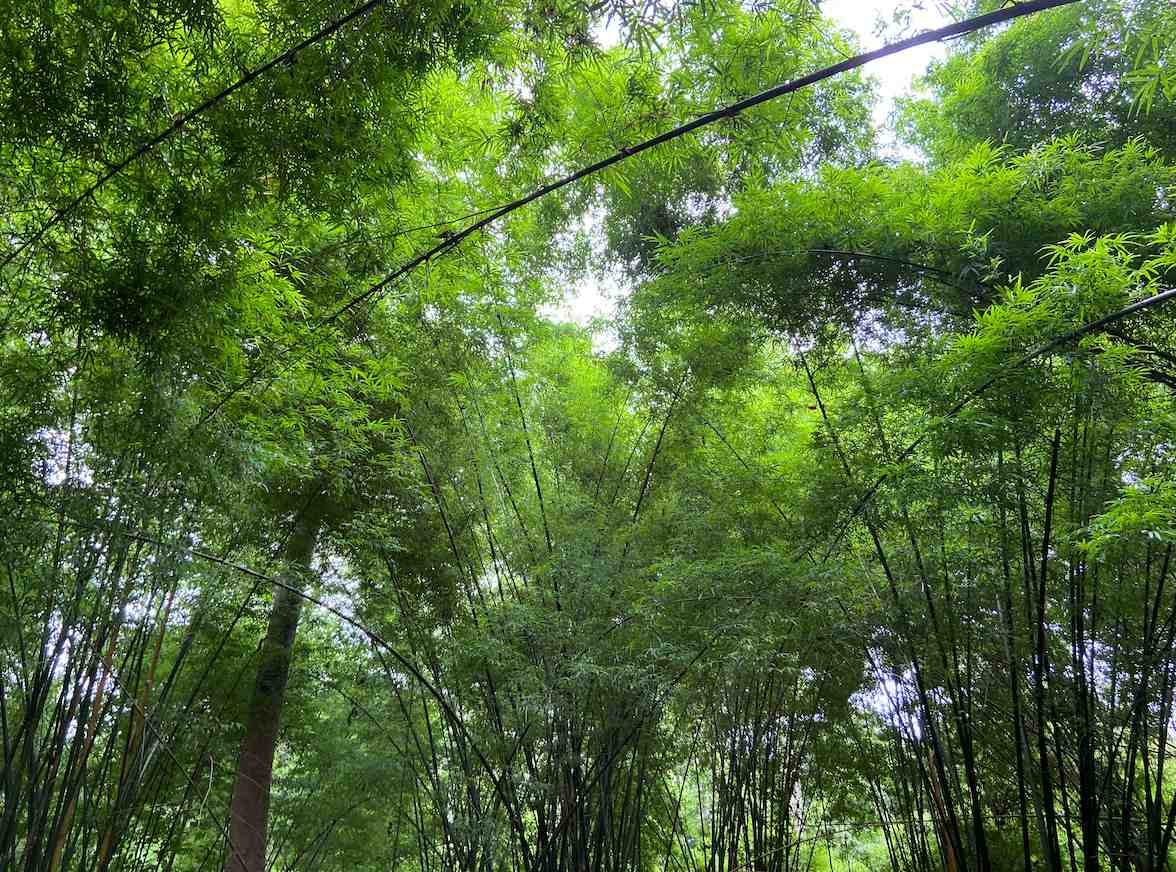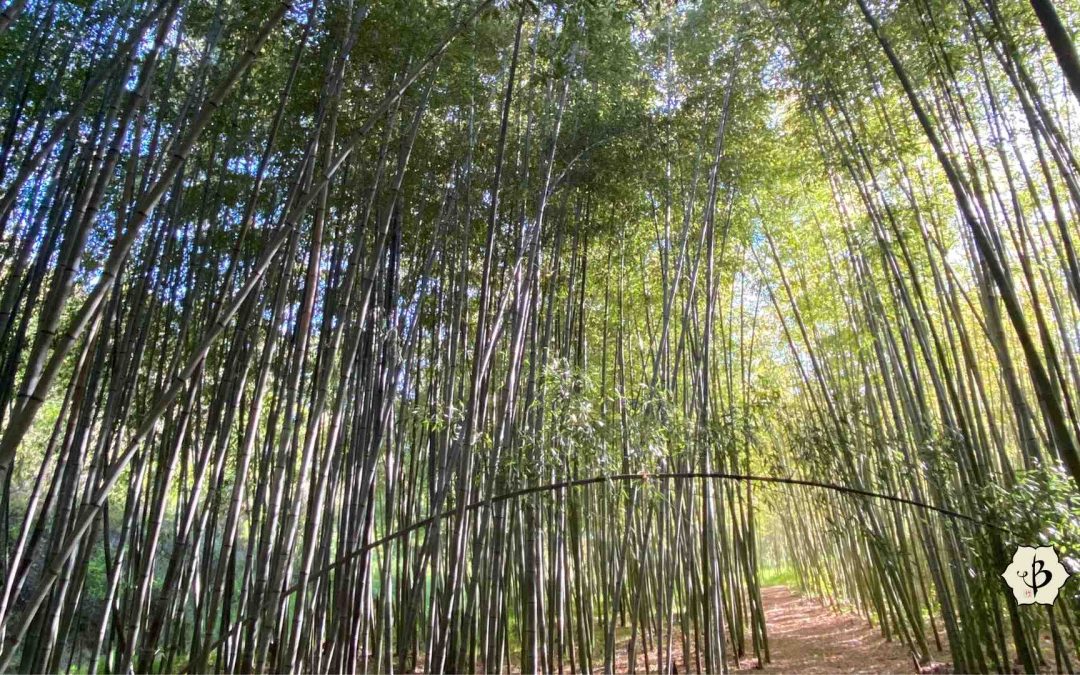Bamboo is widely touted as a superior resource for its versatility and renewability. And rightly so. Unlike trees that can take decades to mature, bamboo can be suitable for harvest within just four or five years. And from there it can become a building material, a textile, or a substitute for any number of single-use plastic products.
As an alternative to deforestation, petroleum-based plastics, and pesticide-intensive crops like cotton, the advantages of this fast-growing grass are tremendous. But bamboo’s benefits for the ecology are equally, if not more impressive.
Even without using bamboo for any industrial or commercial application, growing bamboo can do wonders for the local ecology. Some of its more valuable functions include carbon sequestration, erosion control and wastewater treatment. And each of these applications demonstrates bamboo’s great importance in the battle against climate change.
NOTE: This article first appeared in December 2019, most recently updated in April 2024.

BAMBOO FOR CARBON SEQUESTRATION
Among bamboo’s greatest ecological benefits is its capacity to convert carbon into oxygen. Of course, every member of the plant kingdom performs this vital conversion as part of the cycle of photosynthesis. But because of its high metabolism and vigorous growth habit, bamboo is able to produce oxygen at a much faster rate.
Experts estimate that bamboo can create about 30-35 percent more oxygen than an equal area of trees. And if you read the literature behind any respectable bamboo company, including ours, you will inevitably encounter this statistic. But this is just the tip of the iceberg because what happens beneath the surface is even more significant.

Back to the roots
An important part of what makes bamboo such an incredible organism is its robust rhizome root system. As impressive as those mighty, towering culms may be, the underground network of roots is even more incredible.
Some years, especially the early years of younger bamboo specimens, you may observe little or no activity in the shoots. You might assume that the plant is languishing. But what goes on underneath the soil will tell a different story. Down there, the roots are spreading systematically to gain a solid foothold on the terrain.
At the same time, the roots also take hold and store the carbon being absorbed above ground by the leafy greenery. As the plant uses photosynthesis to absorb carbon dioxide and convert it into oxygen and sugars, it also carries the carbon bi-product deep into the roots.
Forests perform the same service for our planet. And this is one of the dangers of deforestation. Clearcutting not only denudes the landscape and removes the “lungs of the planet.” It also releases great quantities of carbon from underground, carbon that plays a detrimental role in the global warming equation.
But bamboo and its roots are especially important for carbon sequestration for a couple of reasons. For one, the bamboo root system is vast and dense. If you’ve ever harvested bamboo poles, you probably noticed how easy the poles are to saw off.
But if you’ve tried to remove a bamboo plant, extracting it by its roots, then you probably ran into mission impossible. It’s a task beyond the scope of any ordinary set of tools. A saws-all might do the job, but a seriously well-establish grove of bamboo will likely require a bulldozer. Indeed, that complex bundle of rhizomes produces an indomitable force of nature.
And within that impenetrable network, the carbon has just as much difficulty escaping as the hand-held shovel has in trying to remove it. One of nature’s greatest creations, the roots are what gives bamboo its strength, defending the organism and also protecting our atmosphere.
This makes bamboo an essential player in our global ecosystem. And what’s more, in terms of carbon sequestration, it makes little difference whether the bamboo is being grown and harvested for industrial use, or simply planted to enhance the landscape. Because you can harvest this formidable grass without impacting the roots.
Collect as many poles as you want, but the roots will survive, and new shoots will appear in the next season. Again, this is one of the features that makes bamboo something of a sustainable wonder crop. This is the key to bamboo’s renewability. But it’s also fundamental to storing carbon and keeping our fragile atmosphere in balance.

BAMBOO FOR EROSION CONTROL
While sequestering carbon brings a great boon to the global ecology, bamboo roots can also work wonders for local ecosystems. Throughout Asia and Africa, farmers, planners and soil scientists are re-discovering bamboo’s amazing ability to prevent erosion.
Especially in areas already affected by climate change and susceptible to landslides and flooding, the tight root systems underpinning bamboo provide a spectacular solution. As human projects like mining, construction and dam building reshape the earth’s surface, such solutions are badly needed. In the same way that these rhizome networks make bamboo plants almost impossible to remove, they also hold the topsoil together.
Furthermore, in many regions, where the plant is native, bamboo can make an ideal pioneer species. In other words, it will grow in areas where the native habitat has been devastated by natural or manmade disasters. Planting bamboo can be one of the first steps to restore a desolate landscape, paving the way for other native plant and animal species to return.

BAMBOO FOR WASTEWATER TREATMENT
One more incredible characteristic of bamboo, also related to its extensive root structure, is its ability to filter wastewater. Typically, bamboo does not do well in saturated soil, but there are varieties that can perform better around rivers, lake shores, and areas that undergo some ebb and flow.
If these waterways are high in effluent, bamboo can be very effective in drawing up this contaminated water for an overall cleaner ecosystem. Wastewater can also be redirected to irrigate bamboo groves, rather than releasing it into the rivers and streams.
In developing regions that cannot afford to build wastewater treatment facilities, filtration through a bamboo field is an ideal, affordable alternative. With its massive root system, bamboo is able to take up more water and nitrogen than it actually needs. And the solution is doubly practical if you have plans to harvest and use the bamboo for any other commercial purpose.

CONCLUSIONS
In an era of made-up news and impending climate catastrophes, it’s hard to know what’s really happening and what we can do about it. One thing is certain though, climate change is real. And we need to do something about it immediately. OK, that’s two things, which only goes to underscore the urgency of the matter.
If you’re looking for a quick fix or a silver bullet, I could tell you that bamboo will save the planet. But that would not be entirely accurate. What we need is a new paradigm, a new way of thinking and new ways of living. A problem of global scale requires a solution of global scale.
But yes, bamboo can play a vital part in this new way of living. Yes, we need to use more sustainable resources, and bamboo is certainly one of the most sustainable. We also need to reduce carbon emissions and come up with ways to capture carbon that’s already out there. Bamboo is an excellent solution to many such issues.
So by all means, plant more bamboo for its ecological benefits. And take advantage of bamboo as a versatile, renewable resource. But don’t stop there. Be strong and tenacious like bamboo, and never stop looking for solutions.

Further reading
To learn more, check out some of our other popular articles on the virtues of bamboo.
- 8 Best books about bamboo
- The benefits of bamboo
- Bamboo for erosion control
- The 20 best bamboo gardens in the world
- Growing Bamboo: The complete how-to guide
- Bamboo symbolism in legends and folklore
- Bamboo Q & A: Ask the experts
PHOTO CREDIT: A healthy grove of timber bamboo generates oxygen and heals the ecology. Photo by Fred Hornaday.

























